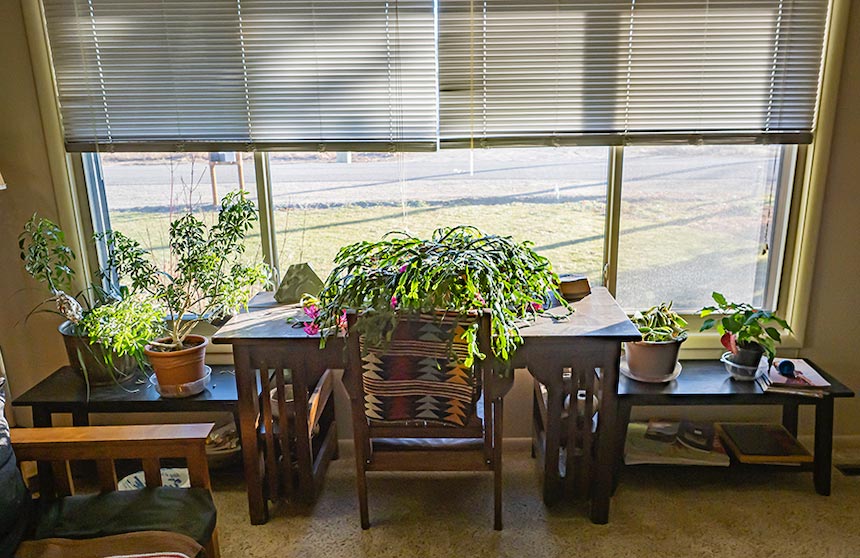Effectively lighting your plants to ensure optimal growth
Published at
Plants need light. Some need more, some need less, but they all need some. When growing plants indoors, this can be a problem.
There are two aspects of light we should consider for indoor plants — light intensity and light quality.
Light intensity
Light intensity is how much light is reaching the plant and is often measured in foot candles or lumens. We often group houseplants into three light-requirement groups: low, medium and high.
The light intensity in our homes is different at each window, and it changes with the season, especially the north- and south-facing windows. If you have a way to measure foot-candles (ftc.) at mid-day, great. If not, here are some general rules:


If your house is at an angle rather than square to the compass, you will need to adjust your placements. Also, keep in mind that shade trees, and deep eves and awnings outside the windows may have a significant effect on light intensity.

Light Quality
You can supplement plants that are too far away from natural light. LED lights, while initially more expensive, will significantly reduce the cost of supplemental lighting over other types of bulbs. Some of these lights are adjustable as far as the light spectrum. Different color lights have a different effect on plant growth, so get lights that are as white as possible.
So what does this all mean? Being intentional in your selection of houseplants will help you be more successful in keeping them alive. First, evaluate your home or office environment. Then, select plants that are adapted to the environment. Good luck, and may you find joy and success in your houseplants.

In the Garden is sponsored by ProPeat, which is dedicated to delivering solutions for any of your professional fertilization needs. Whether you need to reduce the harm to soils and the environment, or you're interested in the latest nitrogen, carbon and biochemical technologies, ProPeat is the perfect fit.


